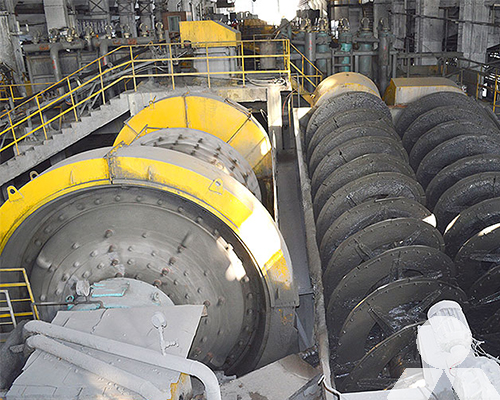Ball Mill Features and Benefits
A ball mill is a crucial equipment used in various industries for grinding materials into fine powders. It operates through the process of impact and attrition, where particles are reduced in size by mechanical forces. This article discusses the features and advantages of ball mills, highlighting their essential role in modern manufacturing processes.

features of Ball Mills:
- Versatility: Ball mills are versatile machines capable of performing various grinding operations. They can be used for both dry and wet grinding, making them suitable for a wide range of materials, from minerals and ores to chemicals and ceramics.
- Size Reduction Mechanism: The primary mechanism of action in a ball mill is the impact and attrition caused by the grinding media (usually steel balls) within the mill. As the mill rotates, the grinding media collide with the material, resulting in particle size reduction.
- Efficient Mixing: Ball mills enable efficient mixing of different materials. This is particularly beneficial for processes that require homogeneous blending of powders or suspensions.
- Controlled Particle Size Distribution: By adjusting the size and composition of grinding media and the rotational speed of the mill, operators can control the particle size distribution of the final product, ensuring consistency and quality.
- Scalability: Ball mills can be scaled up or down to suit the production requirements of different industries. From laboratory-scale mills for research purposes to large industrial mills for mass production, their design allows for easy adaptation.
Advantages of Ball Mills:
- Fine Particle Size: Ball mills excel at producing fine particle sizes, making them suitable for industries that require precise control over particle size distribution, such as pharmaceuticals and cosmetics.
- Energy Efficiency: Compared to other grinding methods, such as hammer mills or roller mills, ball mills are more energy-efficient. The grinding process consumes less energy per unit of material processed.
- Reduced Contamination: Inert materials, such as ceramic or stainless steel, are often used for the construction of ball mills, minimizing contamination of the processed materials.
- Cost-Effectiveness: Ball mills offer a cost-effective solution for grinding large quantities of materials, making them economically viable for industries involved in bulk material processing.
- Continuous Operation: Many ball mills can operate continuously, ensuring a steady output of processed material without interruptions. This is crucial for industries that require a constant supply of processed material.
- Low Maintenance: Ball mills are relatively low-maintenance machines, with simple maintenance tasks like lubrication and occasional replacement of worn-out components.
Ball mills play a crucial role in modern manufacturing processes due to their versatility, efficiency, and ability to produce fine particle sizes. Their features, such as controlled particle size distribution, scalability, and efficient mixing, contribute to their widespread use in various industries. The advantages of ball mills, including energy efficiency, reduced contamination, and cost-effectiveness, make them a valuable asset for industries that rely on particle size reduction and material processing.









